The ISA Brown Chickens are well-known for their hardiness, good egg-laying ability, docile nature, and friendly personality. It’s an attractive, robust bird that’s friendly and easy to manage, making it an excellent choice for hobby farmers and backyard chicken keepers.
How do you know if this breed is right for your flock? Are they friendly chickens? Do they lay eggs in the winter? How long do they lay? Do they handle confinement O.K. or need to free range? How long do they live? What kind of space do they need?
When adding a new kind of chicken to your flock, there is much to know. Here’s everything you need to know about the ISA Brown Chickens.
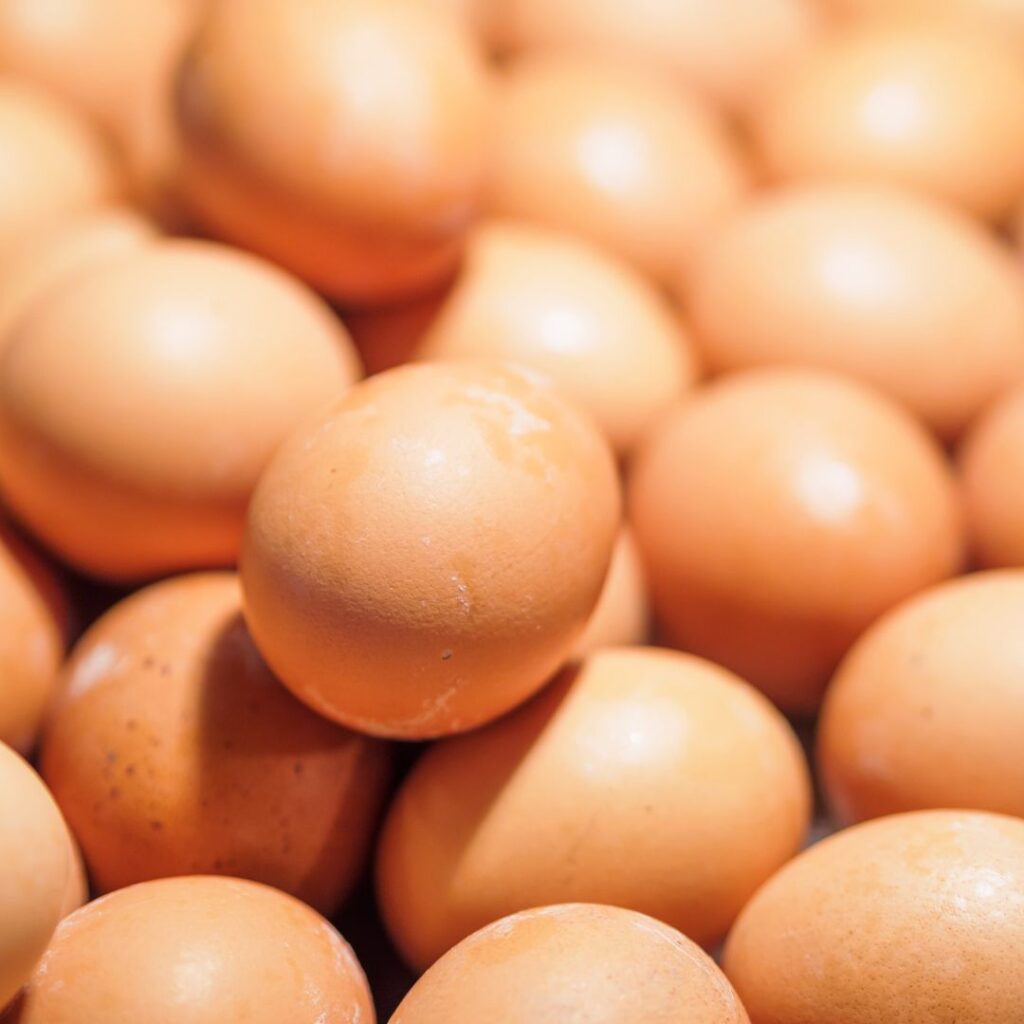
History and Background of ISA Browns
The ISA Brown is a newly developed hybrid chicken bred to be a superior brown egg layer.
ISA Brown’s were originally developed in France In the late ’70s (1978).
ISA stands for The Institut de Sélection Animale (translated: Animal Selection Institute).
The Institut merged with Merck and Co. This is when the ISA became known as the Hubbard ISA.
After multiple mergers, that company is now a part of Group Grimaud La Corbière SA.
~ Frédéric Grimaud, CEO of Groupe Grimaud
While the exact genetic composition of the ISA remains a closely guarded mystery, rumors have continued that Rhode Island Red, Rhode Island White, and White Leghorn pure breeds are part of its makeup. The rest has left people speculating about what other breeds may be involved.
What Is A Hybrid vs. Pure Breed Chicken
One way chickens are defined is as purebred and hybrid. Purebreds are all those that have a set appearance (feather pattern, etc.) and also carry these traits to offspring. The American Poultry Association calls this the Standard of Perfection or SOP.
The chicks of the purebred chicken will be identical in appearance and characteristics to the parents.
Like the ISA Browns, hybrids (aka Crossbreeds) are chickens from the cross of other breeds, usually pure breeds. Typically a hybrid is developed with a goal, such as being a better egg layer or more cold-hardy.

Appearance of the ISA Brown Chickens
The ISA Brown is a medium-sized chicken with hens weighing around 4 1/2 – 5 pounds and roosters weighing around 6 1/2 – 7 pounds.
They are as their name says, brown, but a chestnut or reddish brown. There are lighter under feathers that look golden buff. These lighter feathers will peek through the reddish-brown, giving the girls a newly ‘highlighted’ look. This coloring will contrast even more in the sunnier months. The tail is held upright, and they often have white tail feathers.
They have a red, single, upright comb. Wattles are also red. They are without feathers on their legs. Eyes can range from a reddish bay color to yellow.
Roosters will have larger combs than hens, and they sport primarily white feathers with brown specks peeking throughout and still have white tail feathers like the hens. The ISA Rooster’s 2-pound weight difference over the hens gives them a stockier appearance.
ISA Brown Chicken Breed or Hybrid Chicken?
The ISA Brown chicken is a hybrid that was developed for increased egg production. Hybrid chickens do not have defined breed standards.
As a hybrid, there is no specific standard of perfection set by the American Poultry Association. Hybrids tend to vary in appearance, primarily in feather color with the ISAs.
The ISA’s have another trait: the ability to identify chicks at hatch, meaning you can easily tell the male from the female. This makes it simple to identify gender in chicks when working with commercial egg production and backyard chicken owners who don’t want to have to eliminate roosters from their flock.
Other hybrid chickens developed with similar purposes are the Golden Comet and the Black Sex Link.
Note: Mating the ISA rooster to an ISA hen will not produce an ISA Brown – this is another part of what makes having a hybrid chicken so special. This means they do not breed true.
What do The Baby ISA Brown Chicks Look Like?
The baby, ISA Brown chicks, are unmistakably cute. Because of the sex-linked gene present in this breed, you can tell the difference between the male and female chicks even when they are newly hatched from their shells.
Pullets (females) will be reddish brown, and cockerels (males) will sport white (pale yellow) feathers.
About The ‘Suspected” Parent Stock
Although the particular parent stock is a closely guarded secret, it is suspected that a few of the contributing breeds used are the Rhode Island Reds, Rhode Island Whites (lay big brown eggs), and White Leghorns (large white egg layers). However, honestly, the truth is a mystery.
The Rhode Island Red and White Leghorns are ‘purebred’ chickens known to be prolific egg layers in their own right.
Most likely, many breeds were a part of this incredible egg-production bird.
Note: This hybrid’s parent lines are protected under copyright laws, meaning: don’t go thinking about crossing your own crossbreed and calling them ISA Browns; you’ll need to come up with your own clever name.

ISA White
The ISA White is also a high egg-production hybrid breed. Hens produce over 300 large white eggs in one year with each hen. That’s more than any purebred chickens that lay white eggs.
Her docile personality makes her comfortable interacting with people and other poultry, making caring for your flock much easier.
ISA Brown Chicken Temperament
The ISA Brown is known for its friendly disposition, making them easy to manage. They are also quite docile compared to other breeds.
Even the ISA Brown roosters are known for rarely showing aggression in backyard flocks.
Are Isa Brown Chickens Good Pets?
The ISA Brown Chicken has a charming personality, making it an excellent pet for those considering getting backyard chickens. They have a sweet and docile temperament, making them ideal for households with children or first-time chicken owners.
These chickens love interacting with people and forming bonds contributing to their friendly and affectionate nature. This breed is one of the most approachable chickens, making it perfect as a family pet.
If you’re looking for an easygoing breed of chicken, the ISA Brown will not disappoint.
Do ISAs Do Well In Mixed Flocks?
Many backyard flocks successfully mix breeds. They follow a few simple rules, and the results are always worth the small effort.
The ISA breed can indeed be successful in a mixed flock of chickens. However, care needs to be taken when combining different chicken breeds- some are known for being docile while other chicken breeds can be more dominant and aggressive.
If introducing ISAs into a previously existing flock, it is essential to pick breeds similar in size and temperament so they will be protected from living with larger or more assertive birds.
Providing adequate space and resources will help create an environment that encourages harmony between the chicken breeds.
With attention to these things when putting together a mixed flock, your backyard chickens will offer their owners many years of enjoyable companionship and farm-fresh eggs.
Are ISA Brown Chickens Noisy?
ISA Brown chickens are known to be relatively quiet compared to other chicken breeds. They are not prone to frantic or loud outbursts, making them an excellent choice for urban areas.
While they do chatter among themselves while free ranging, it is certainly not a loud noise and is usually kept to a minimum as they enjoy the peace while spending time together.

Egg Laying Ability of the ISA Brown Hens; Are They Prolific Egg Layers?
The ISA Brown is considered one of the most prolific egg layers among commercial chicken breeds – capable of laying up to 300+ brown eggs per year. This makes them perfect for those wanting eggs regularly without having to buy from stores all year round. They have certainly earned their place among the top egg-laying breeds.
Two ISA Browns will produce a dozen Brown eggs per week or 52 dozen brown eggs per year, efficiently feeding a small family.
Are Isa’s Broody?
The broodiess has been bred out of this hybrid, you’d be hitting the lottery if you had a broody hen from this type of bird. These are purely production breeds. Read more about the best and worst breeds of broody hens here.

How Long Do ISA Hens Lay Eggs and Live?
ISA Browns start laying eggs around 16 weeks, with some starting as late as 22 weeks.
The ISA Brown laying hens will lay for 2 years on average (some will lay up to 3 years). Egg production will peak around two years and decline longer than that.
Read more here about why chickens stop laying eggs.
While the life expectancy of an average hen is 5-7 years, the hard work the ISA Browns, do so early in life most often limits life expectancy to 3 – 5 years.
Raising chickens responsibly with care and compassion during their short lives is part of the responsibility of an older and new chicken keeper.
While hens may lose their egg-laying abilities, they can continue to provide organic fertilizer for your garden, pest control for your yards, and companionship throughout their lifetime.
Are ISA’s Cold Hardy? Heat Tolerant?
The ISA Brown chicken is a great choice for those looking for a hardy bird. With their cold-hardiness and ability to do well in warm climates. They’ll flourish in any environment when you give them proper shelter and shade against the elements.
This is why the ISA Brown is so famous here in the U.S. and Australia.
Read more about how to help your hens lay year-round here.
Read About Cold Hardy Chicken Breeds Here.
Read About Chicken Care In Winter Months Here.
Read About Heat Tolerant Chicken Breeds Here.
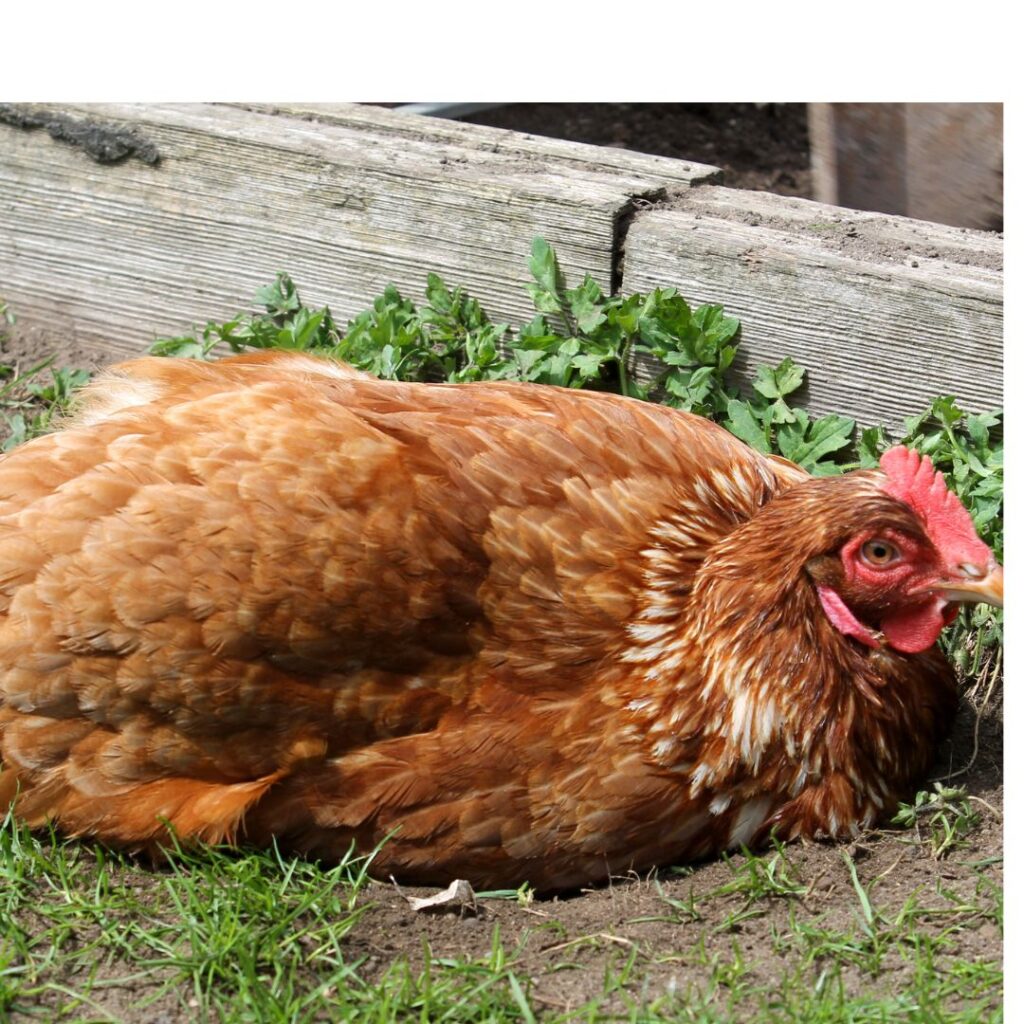
Caring for your ISA Brown Chickens
Taking care of your ISA Browns is easy and rewarding. They need a fresh water supply daily and good quality feed, preferably one higher in protein and calcium, to meet their needs as prolific layers of eggs.
These birds are low maintenance but need simple, consistent care to stay healthy and happy. Making sure they have everything they need can help ensure your flock always has plenty of eggs.
It’s just a small effort for the joy you get from having them around.
Feeding Your ISA Brown Hens
When caring for your feathered flock, remember the power of proper nutrition.
Taking the time to feed your ISA Browns properly is essential. Aim for a feed ration with 18 – 20% protein, and you will be sure to get those hard-working ISA Browns laying the most eggs possible.
Refrain from skimping on nutrition and settling for a ration with less than 17% protein, as this can reduce your egg production.
In addition to their feed, ensure they have access to oyster shells, especially after a molting period; the ISA Brown hen will need all the protein and calcium she can get.
Consider giving them meal worms or, yes, hard-boiled eggs crumbled up a couple of times a week as a treat. These are both excellent sources of protein your ISA Browns can benefit from.
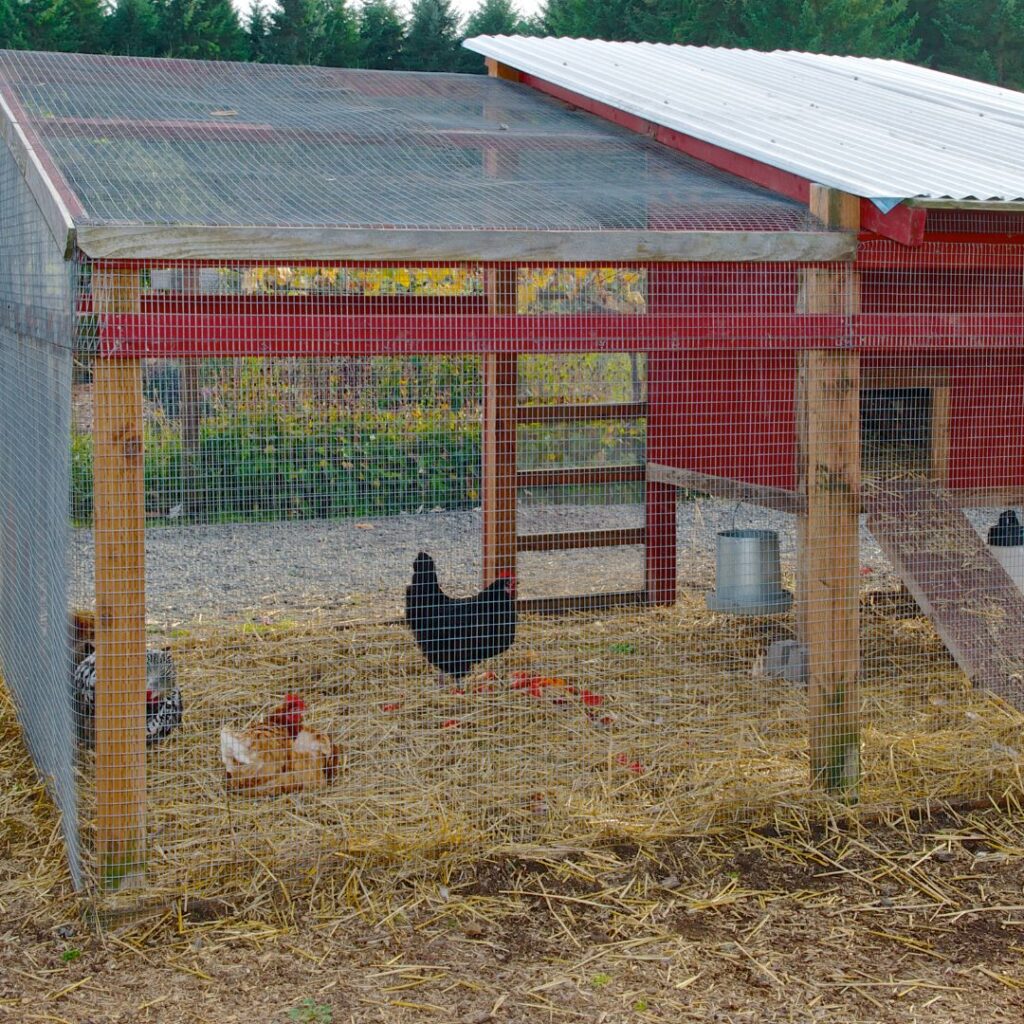
Proper Housing For Your ISA Browns
While these prolific egg-production birds were bred with the commercial egg industry in mind (confinement), they thrive in a backyard flock if proper conditions are available. Their needs are simple.
Space Of The Chicken Coop
While ISA brown chickens are largely used in the commercial egg industry, where they handle confinement well, we don’t believe a healthy backyard chicken should be considered raising unless the chicken keeper is able and willing to provide the birds a minimum of 6-8 square feet of indoor coop space per bird.
Nesting Boxes
All hens should have one nesting box for every four hens in the flock. If you have 8 hens, then you want two nesting boxes.
Nesting boxes have nothing to do with the number of eggs laid by a hen. Hens will lay their eggs anywhere. Nesting areas are to have your hen can do their egg laying in a place they won’t get broken.
Each Nesting box should be 12″ square for your ISA Brown hen. Be sure these are cleaned regularly and well-lined for your laying hens to be laying eggs regularly.
Roosts
12″ length of roost space for each chicken. Roosts can be around 18″ from the coop’s floor. The roosts are where they rest and sleep. Winter resting is also when you’ll notice your chickens huddling together for warmth; in the summer, they’ll spread out.
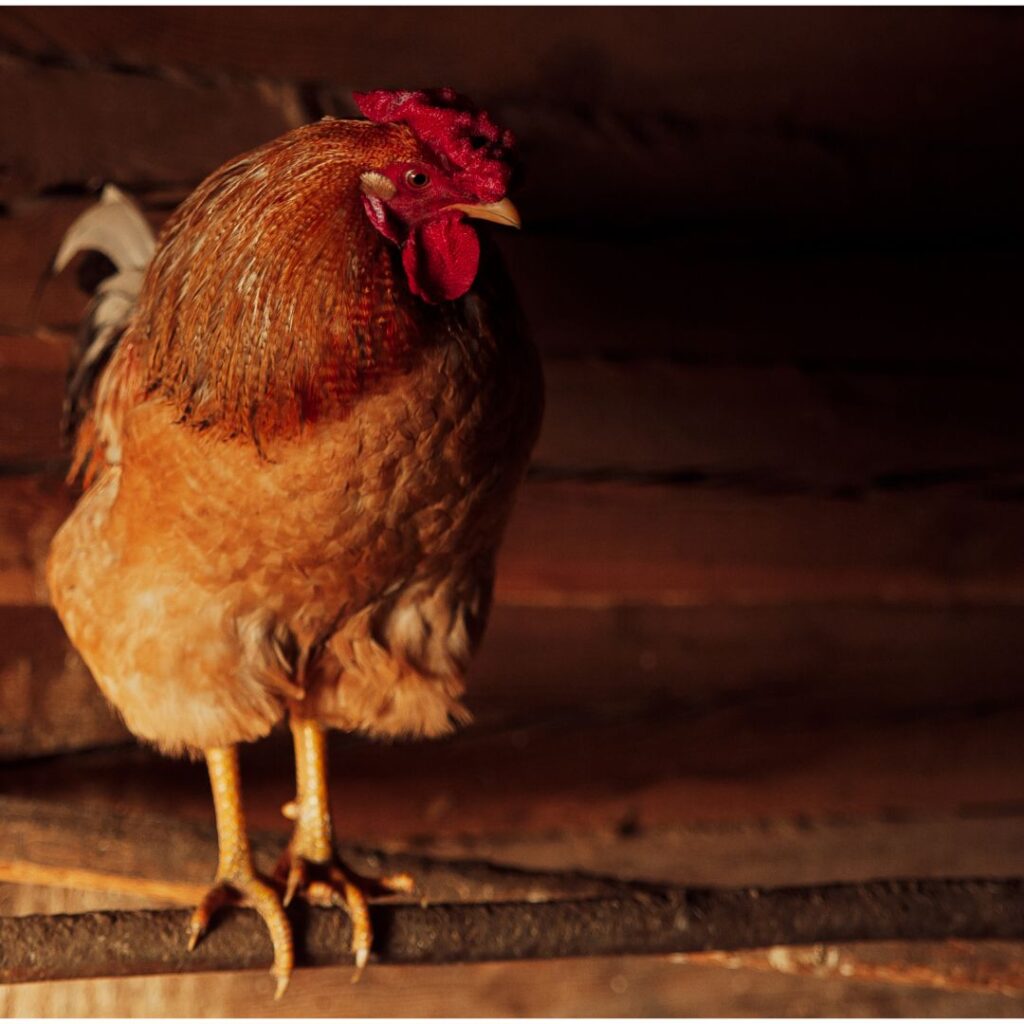
Feeders and Waterers
Always have clean, fresh water and feed available. Hanging containers about 4-6″ from the floor will help keep dirty litter from getting in. If you cannot hang the feeder or waterer, place it on a piece of wood or a block.
The Chicken Run
Your chicken run is just as important as your chicken coop. Outdoor air, space and exercise will all contribute to a health flock.
Space
Skimping on run space can cause behavior problems with any chicken breed. Chickens need room to move about, forage, explore, and relax without being bothered.
Outdoor runs should provide a minimum of 10 square feet per chicken.
Remember to toss some oyster shell and chicken grit around the run or yard to encourage foraging while also helping eggshell strength and digestion (grit)
Fence Height
All it takes is one coyote or raccoon to get into the coop, and you’ll quickly learn the importance of an safely secured fence. Fencing should be 6′ high. This is not only to container your birds when they’re not on a supervised free-ranging time but, more importantly, to prevent a predator from getting inside the run.
Overhead predators are more abundant with climate changes and less ‘wild food’ to forage. A wire mesh, roof, or overhead protection is a good idea.
Provide Perching Space
Space is always a priority, especially for chickens unable to roam freely throughout the day. A perching space expands their square footage by allowing them that vertical space. This is also a place a bird can hop up to for some quiet time or avoid a brief spat.
The most significant benefit to perching space is enabling your chicken to have more exercise choices and places to explore. Perches can be put together for free using old sturdy branches, pieces of wood, upside-down buckets and barrels, and even discarded kiddie slides.
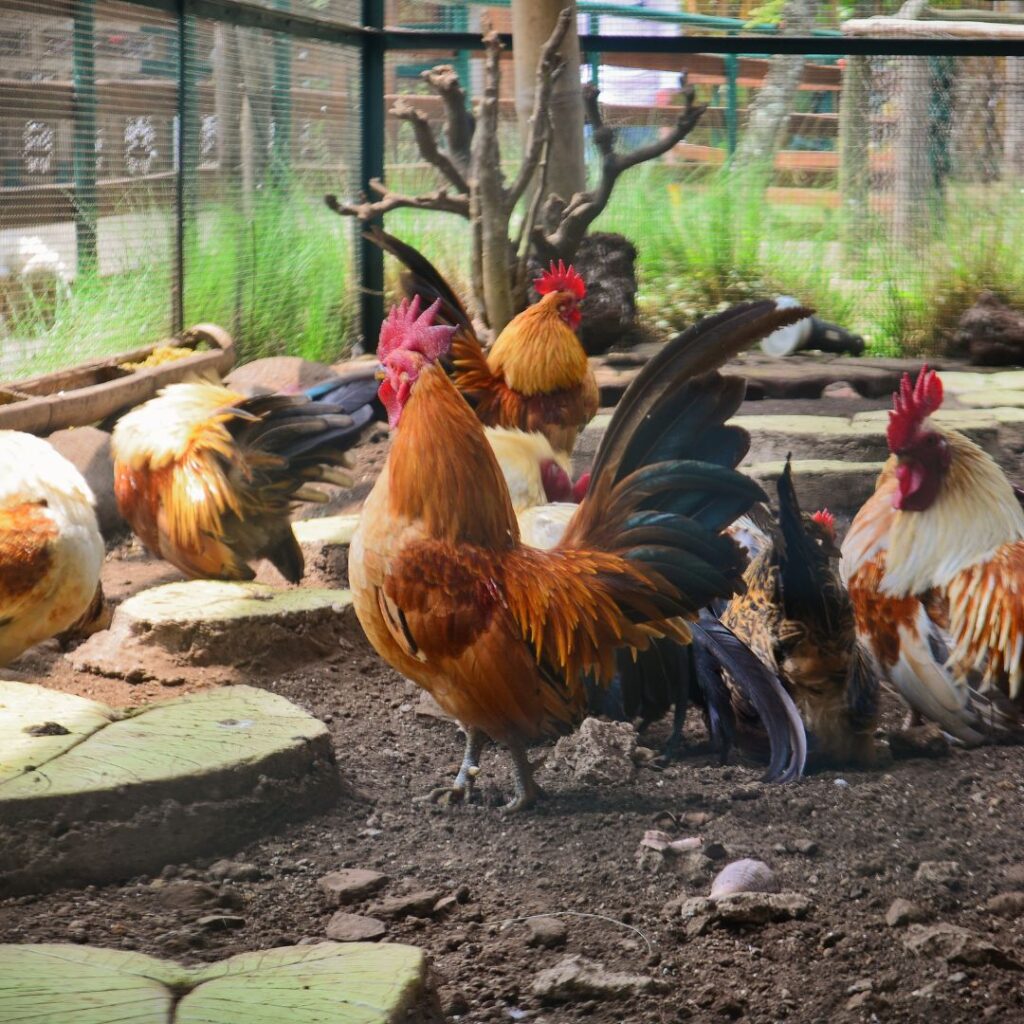
Dust Bath
ISA Browns love a good dust bath. While it won’t make them lay more eggs, it will help keep them healthy and free of mites and lice. Add the benefit of beautifully shiny clean feathers and a happy bird; you have a magic recipe for a happy flock all in a dust bath.
How Much Free-Range Space Does An ISA Chicken Need?
Honestly, ISA Brown and White chickens do very well in confinement with adequate outdoor run space. However, given the great outdoors, a spread of grass, or a pile of leaves to forage through, they will be as delighted as a kid at the carnival. Chickens love to forage; it’s in their blood, their genetics, it’s just plain and simply a natural thing for them and they not only enjoy the act of free-roaming and foraging for tasty bugs, but it’s undeniably healthy for them as well.
Free-range birds get more exercise so they are less likely to pick n peck at one another out of boredom.
Free-ranging flocks also lean towards laying more eggs.
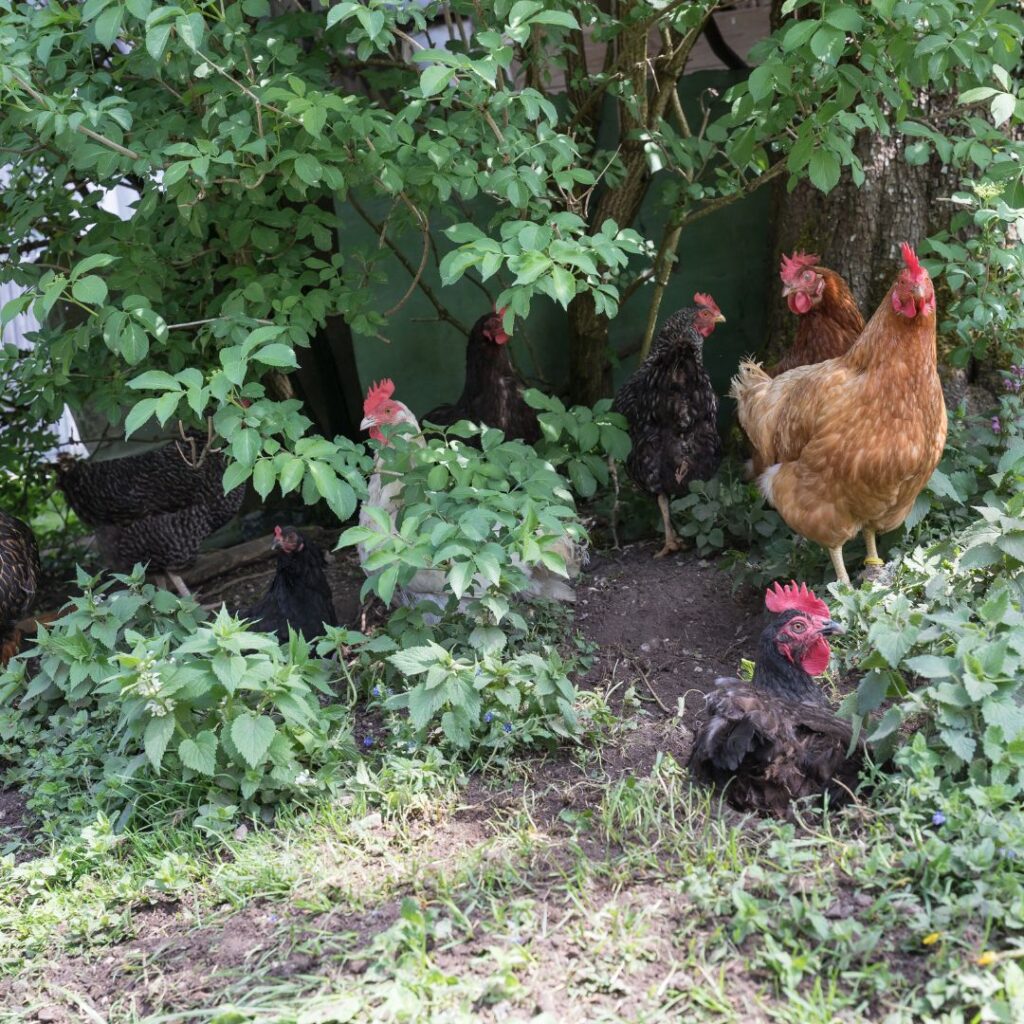
Are ISA Brown Chickens O.K. For Uban (City) Homesteads?
The quiet nature of the ISA Browns makes them so attractive when looking for the right breed. This quiet demeanor means that annoying squawks throughout the day don’t have to be an issue in deciding which birds are best suited for close living quarters in urban and suburban neighborhoods.
Add a few ISA Brown hens to your flock for good measure to share fresh eggs with your neighbors, and you’ll have them all complementing your backyard flock in no time.

Is the Isa Brown Chicken Right For A First Time Chicken Owner or a Seasoned Hobby Farmer?
The ISA brown chicken is an ideal breed for urban homesteaders who want fresh eggs daily and a rural chicken keeper who want a low-maintenance breed that produces lots of high-quality eggs every day – all while remaining friendly towards humans & other animals alike.
A first-time chicken owner or young chicken keeper can find the ease of care and egg-laying abilities of the ISA Browns incredibly rewarding. The docile nature of these chickens makes it enjoyable and a treat to care for a flock with ISAs.
Not only do these hens lay medium to large brown eggs, but because they are such hardy birds, they can withstand cold temperatures without any issues & live up to 5-7 years depending on how well cared for & looked after – making this breed great value for any chicken owner.
So if you’re looking for a bird that isn’t demanding yet still is a prolific egg layer, consider adding some ISA Browns into your backyard flock today & enjoy having fresh farm fresh omelets every morning thanks to these delightful little hens.

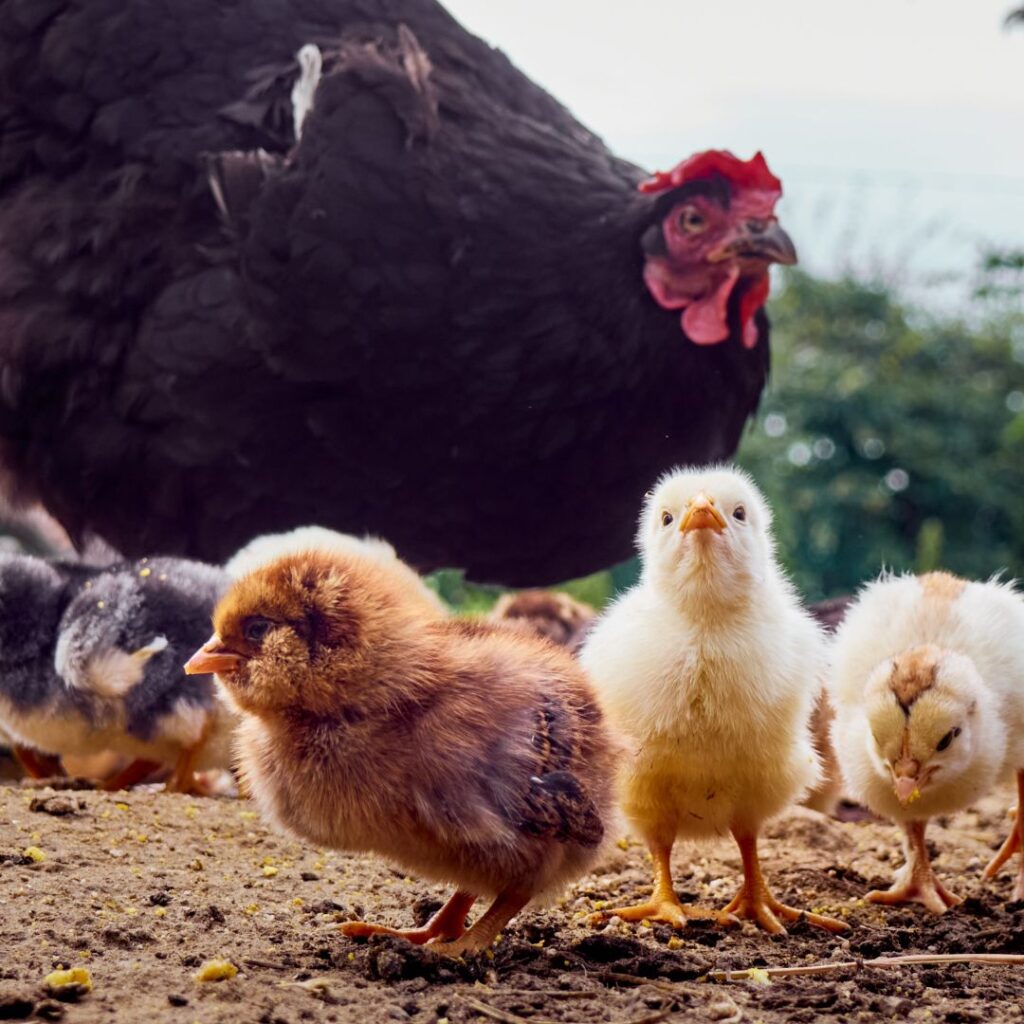
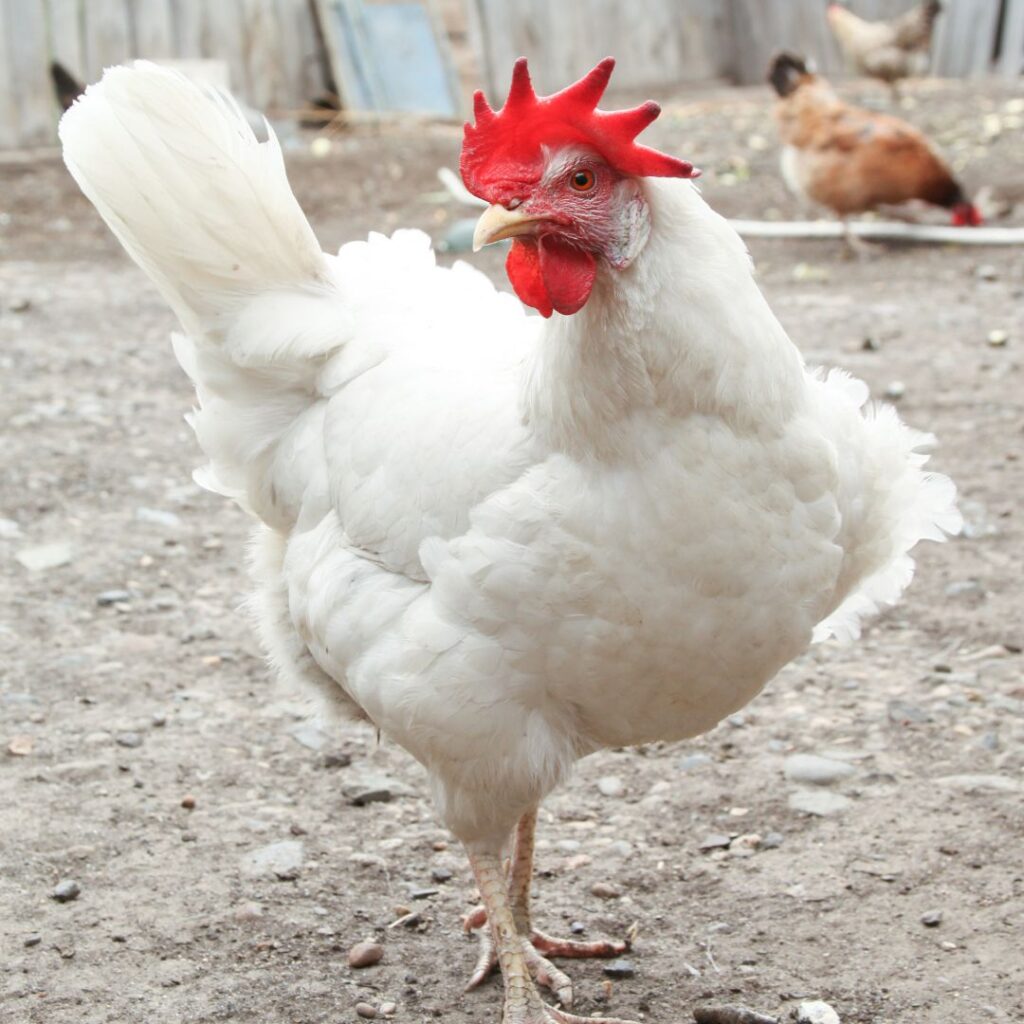
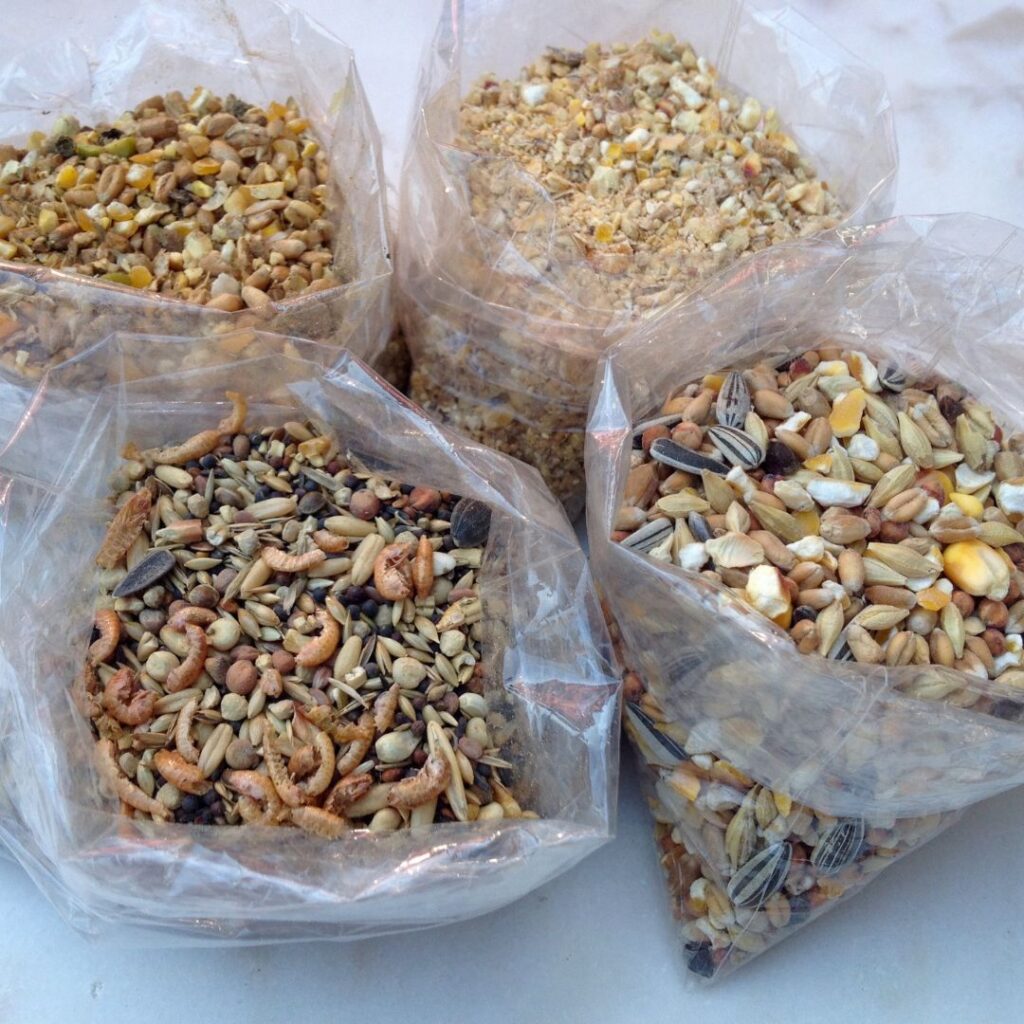
Pingback: 15+ Best Heat Tolerant Chicken Breeds & 5 Worst Breeds for Hot Climates
Pingback: 9 Best Broody Chicken Breeds & 9 Least Broody Chicken Breeds